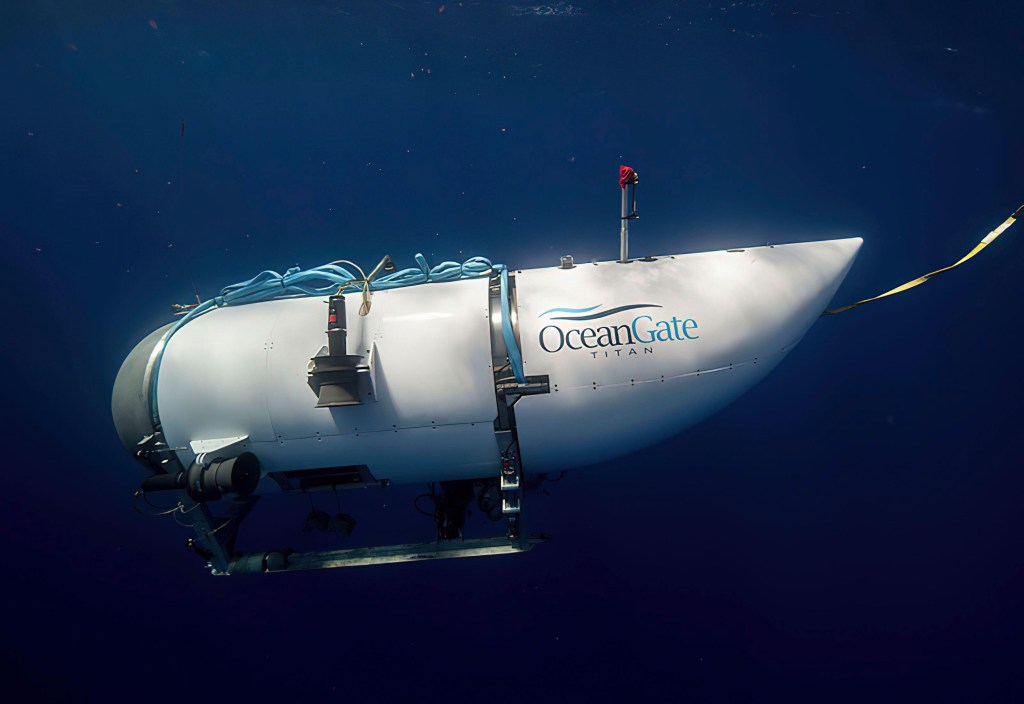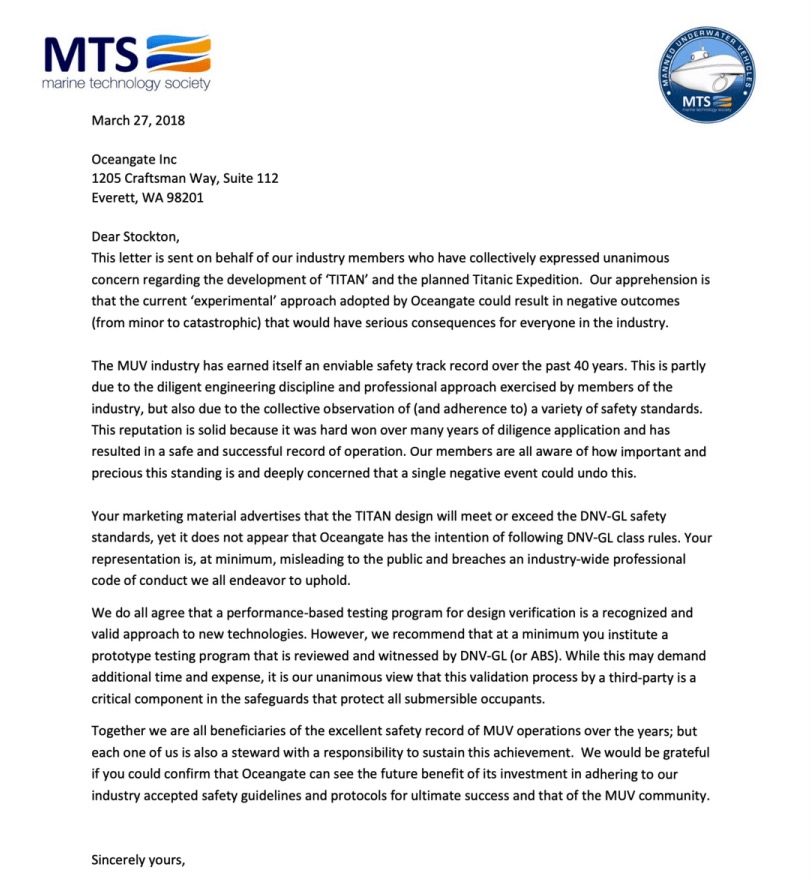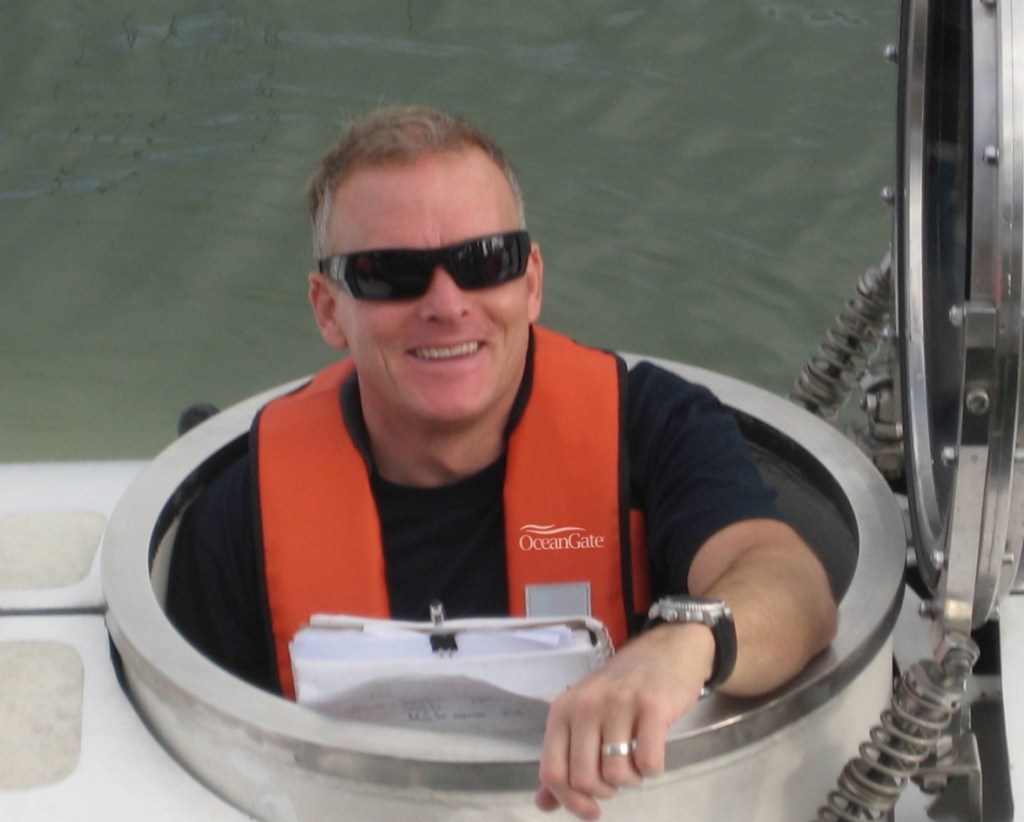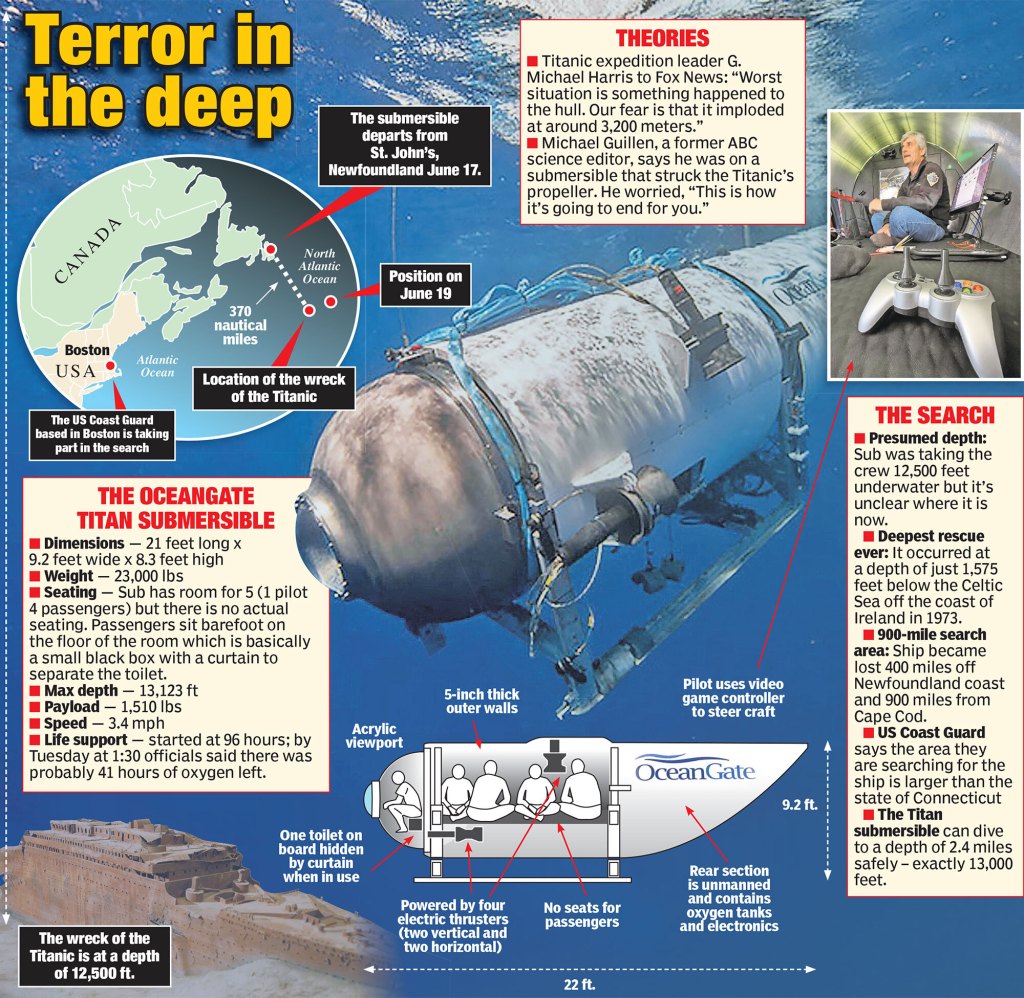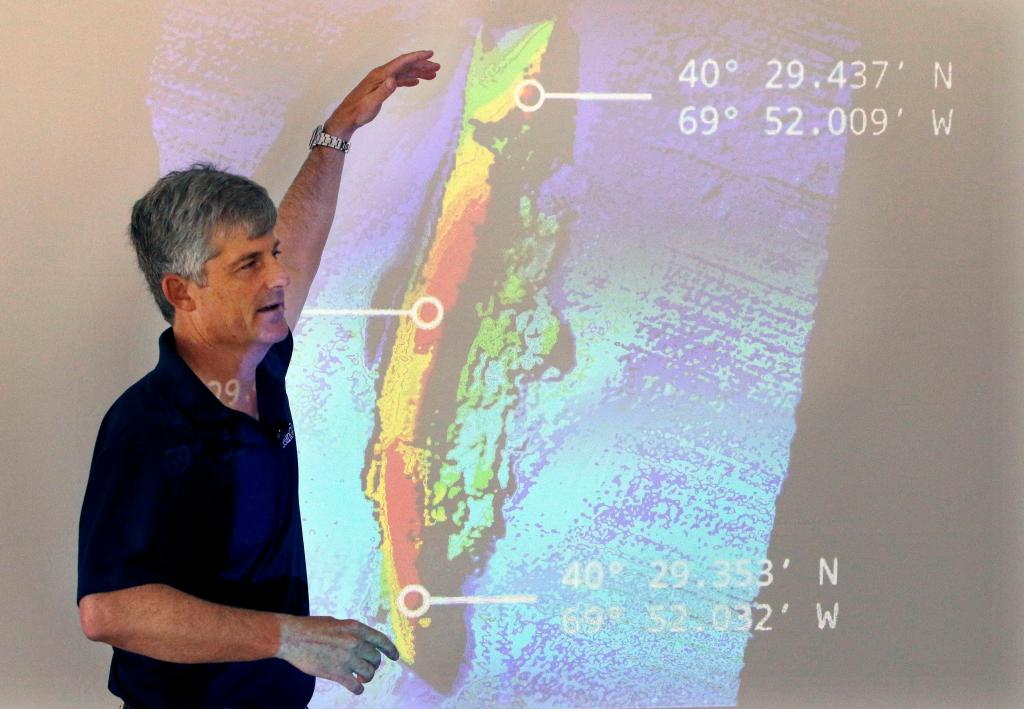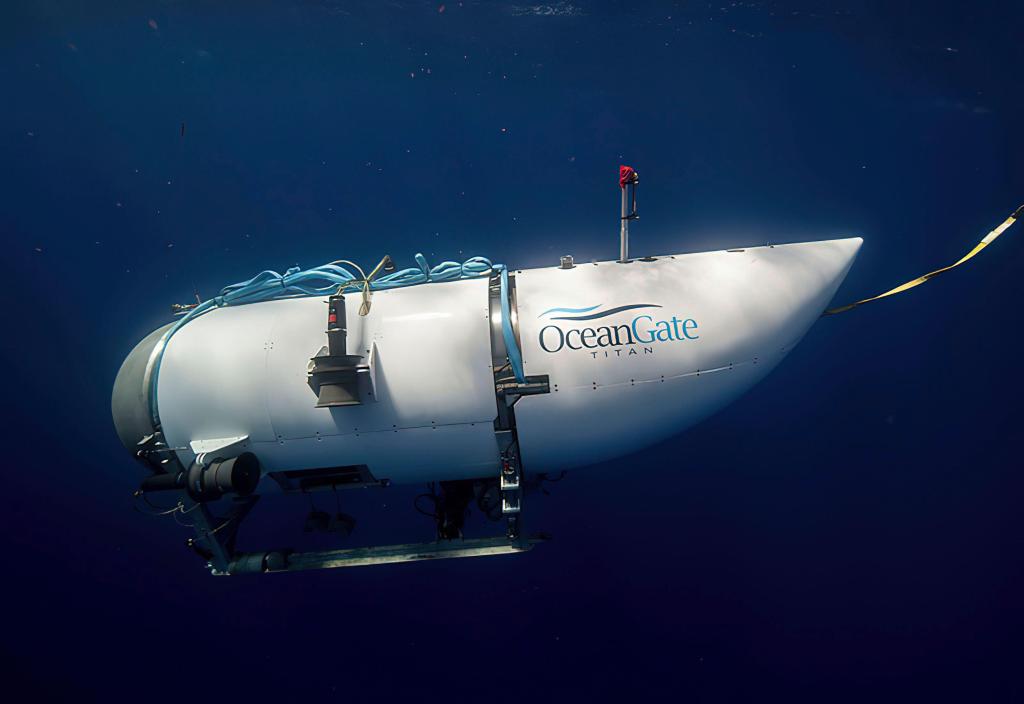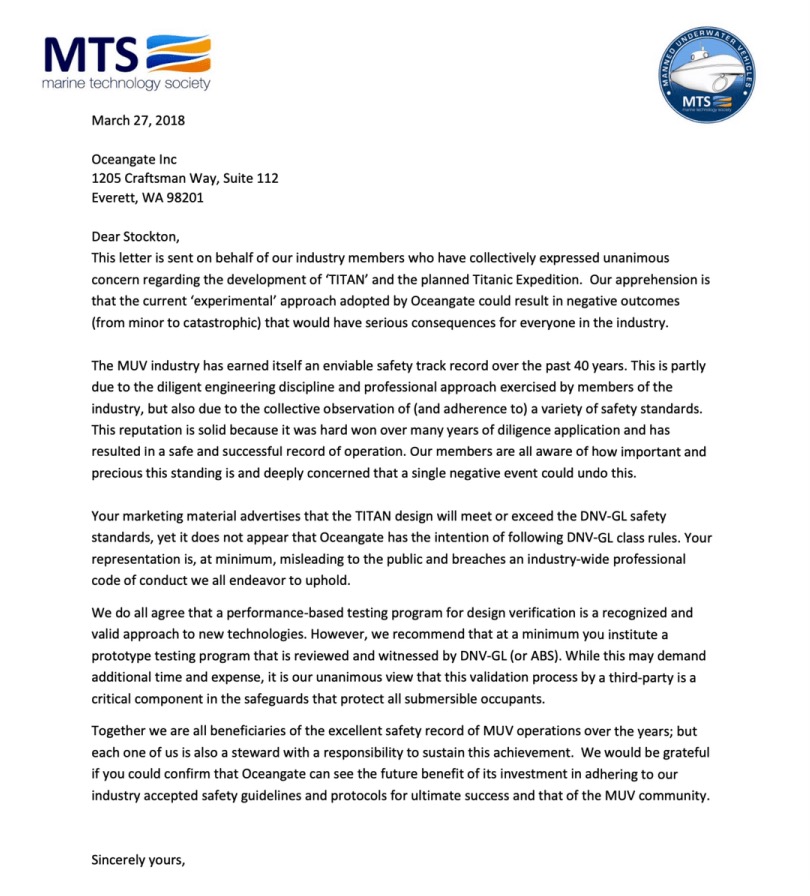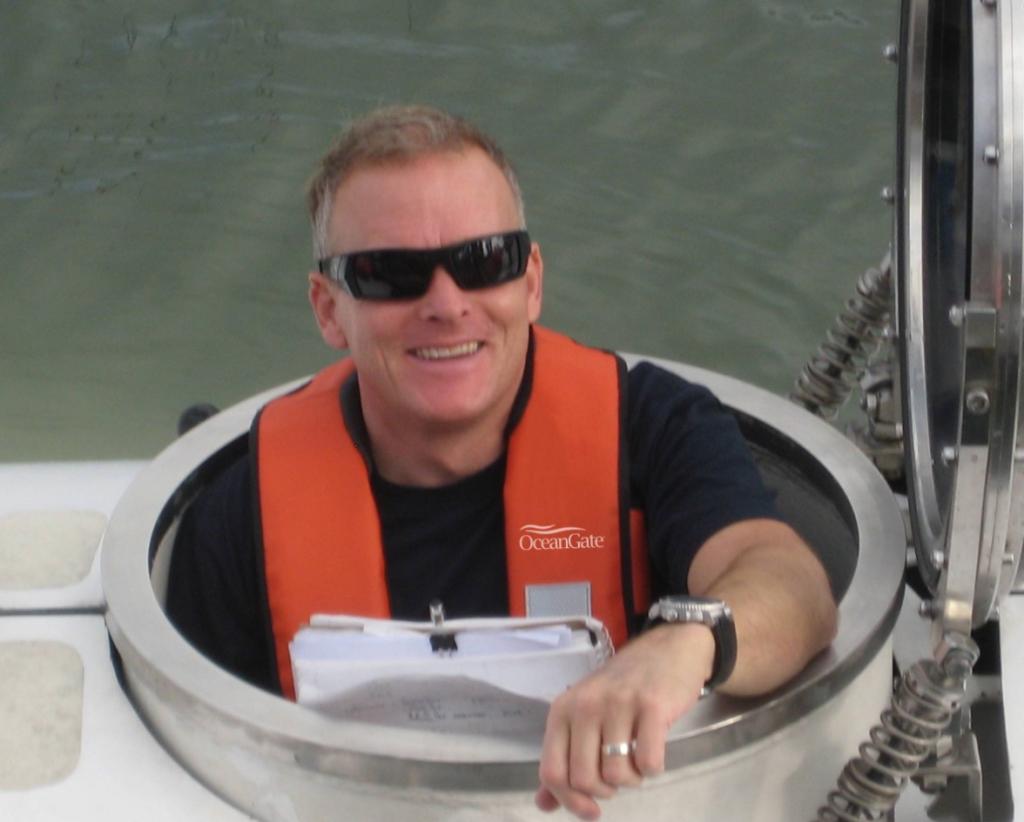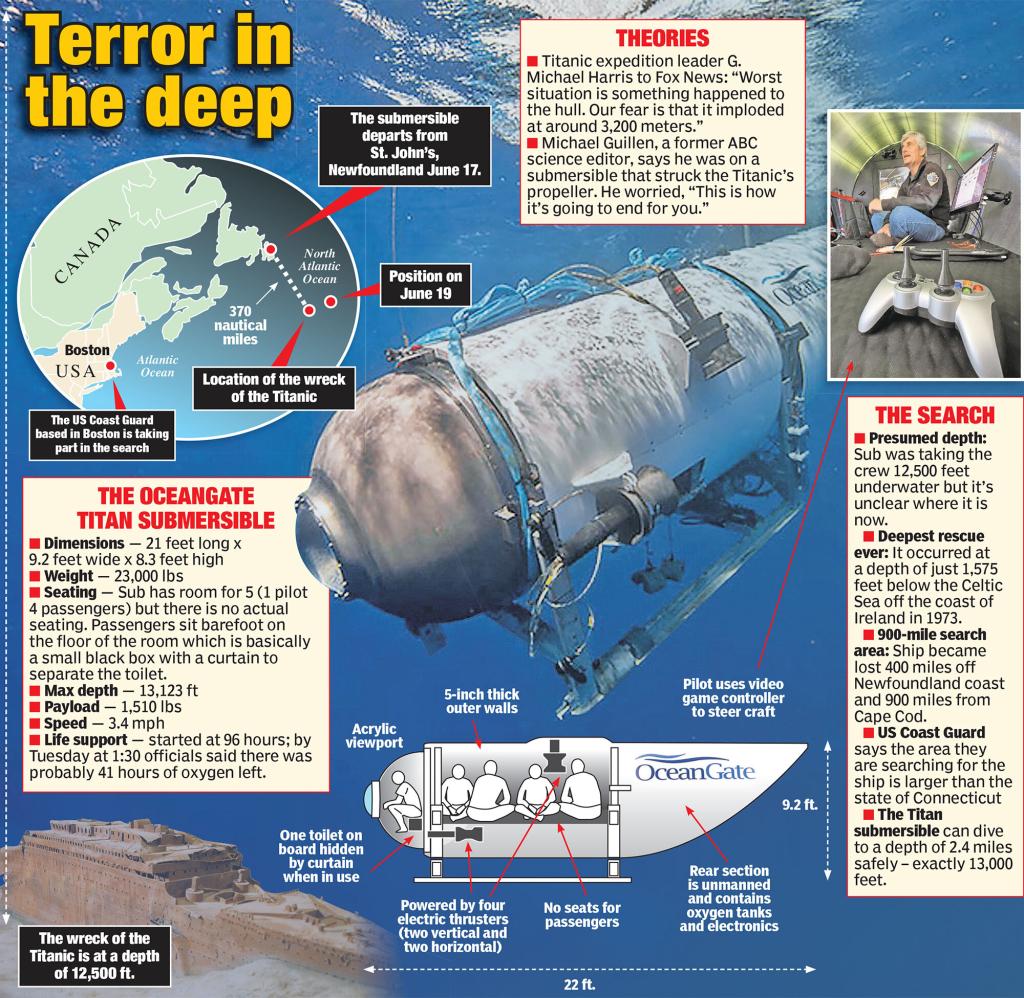OceanGate CEO once complained of industry’s ‘obscenely safe’ regulations
The founder and CEO of OceanGate Expeditions complained that the US submarine industry’s “obscenely safe” regulations had been holding back his “innovations” years before his submersible went missing — with experts alleging that he skirted regulations by operating in international waters.
Stockton Rush, who is among the five who vanished aboard his company’s Titanic tourist sub Sunday, aired his grievances against the strict rules in 2019 — the same year his company began advertising trips to the bottom of the Atlantic.
“There hasn’t been an injury in the commercial sub industry in over 35 years. It’s obscenely safe, because they have all these regulations,” Rush told Smithsonian Magazine. “But it also hasn’t innovated or grown — because they have all these regulations.”
It happened to be the same thing Rush allegedly told Will Kohnen, chairman of the Marine Technology Society, in 2018, when members of the group collectively warned OceanGate that its experimental designs could lead to “catastrophic” results that could impact the entire industry.
Rush and four others now find themselves lost after their vessel disappeared en route to the Titanic wreckage 900 miles east of Cape Cod, with less than 20 hours of oxygen remaining on the ship as of Wednesday morning.
Brian Kemper, one of the MTS members who signed the letter warning OceanGate, told Insider that the private company was able to evade industry regulation by deploying in international waters, where US rules don’t apply.
The assessment was echoed by Stefan Williams, a professor at the Australian Centre for Field Robotics at the University of Sydney, who slammed the loopholes of which OceanGate allegedly took advantage.
Tourist submersible exploring Titanic wreckage disappears in Atlantic Ocean
What we know
A submersible on a pricey tourist expedition to the Titanic shipwreck in the Atlantic Ocean has vanished with likely only four days’ worth of oxygen. The US Coast Guard said the small submarine began its journey underwater with five passengers Sunday morning, and the Canadian research vessel that it was working with lost contact with the crew about an hour and 45 minutes into the dive.
It was later found that a top-secret team with the US Navy detected the implosion of the Titan submersible on Sunday, but did not stop search efforts due because the evidence was “not definitive” and a decision was made to “make every effort to save the lives on board.”
Who was on board?
The family of world explorer Hamish Harding confirmed on Facebook that he was among the five traveling in the missing submarine. Harding, a British businessman who previously paid for a space ride aboard the Blue Origin rocket last year, shared a photo of himself on Sunday signing a banner for OceanGate’s latest voyage to the shipwreck.
Also onboard were Pakistani energy and tech mogul Shanzada Dawood and his son Sulaiman, 19; famed French diver and Titanic expert Paul-Henri Nargeolet, and OceanGate founder and CEO Stockton Rush.
- Missing Titanic sub live updates
- Debris discovered near Titanic site during frantic search for missing crew on OceanGate sub
- Daughter of missing Titanic diver remains hopeful: ‘I think we have to trust’ search crews
- Titanic tourist Hamish Harding’s family slams OceanGate for delay in reporting missing sub
- Coast Guard knew Titan sub imploded Sunday, but continued search anyway — here’s why
What’s next?
“We’re doing everything we can do to locate the submersible and rescue those on board,” Rear Adm. John Mauger told reporters. “In terms of the hours, we understood that was 96 hours of emergency capability from the operator.
Coast Guard officials said they are currently focusing all their efforts on locating the sub first before deploying any vessel capable of reaching as far below as 12,500 feet where the Titanic wreck is located.
Mauger, first district commander and leader of the search-and-rescue mission, said the US was coordinating with Canada on the operation.
The debris recovered from the US Coast Guard’s Titan submersible search site early Thursday included “a landing frame and a rear cover from the submersible.”
After search efforts to recover the stranded passengers proved futile, and bits of debris from the submersible were found, it was decided that the sub imploded, which correlated with an anomaly picked up by the US Navy in the same area.
The Coast Guard later reported that all 5 passengers were confirmed dead, and rescue efforts were halted.
“I don’t know of any specific regulations associated with this sort of deep sea tourism that’s starting to emerge,” Williams told Insider. “I think it’s a relatively nascent industry.”
“I think it is relatively rare that it’s happening and you can see from the reports of the cost associated with getting people onto these vessels that it’s an expensive business,” he added about the $250,000 trips.
Along with the warnings from MTS, David Lochridge, OceanGate’s former director of marine operations, warned the company in 2018 about the dangers allegedly present in the Titan sub.
Lochridge said he found a “lack of non-destructive testing performed on the hull of the Titan,” and when he raised the issues with Rush, he was wrongfully terminated, according to a lawsuit.
“OceanGate gave Lochridge approximately 10 minutes to immediately clear out his desk and exit the premises,” Lochridge’s attorneys said in the filing.
“The paying passengers would not be aware, and would not be informed, of this experimental design, the lack of non-destructive testing of the hull, or that hazardous flammable materials were being used within the submersible.”
OceanGate did not immediately respond to The Post’s request for comment.
During a feature story about its trips to the Titanic in late 2022, Rush admitted to journalist David Pogue that there were risks involved in the deep-sea dive, but characterized them as just another part of life.
“You know, at some point, safety just is a pure waste. I mean, if you just want to be safe, don’t get out of bed,” he said. “At some point, you’re going to take some risk, and it really is a risk/reward question. I think I can do this just as safely by breaking the rules.”
In the report, Pogue noted that the waiver before embarking on the trip included language that made it clear that Titan was an “experimental vessel” that had not been “approved or certified by any regulatory body, and could result in physical injury, emotional trauma or death.”









